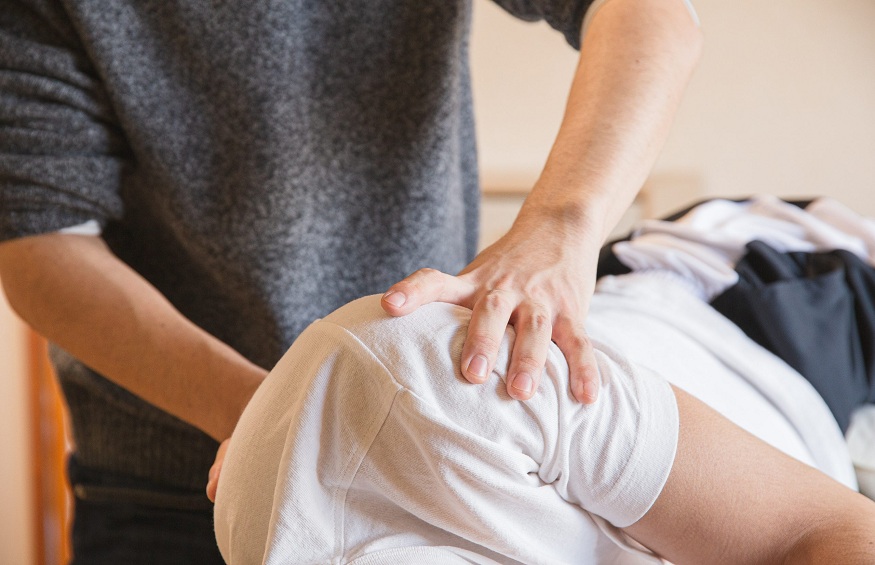Is your sports practice causing you shoulder pain? You may be suffering from rotator cuff tendonitis, one of the conditions that can affect cause shoulder pain . Others include shoulder bursitis and shoulder capsulitis .
If you have shoulder pain, make an appointment for a physiotherapy consultation at one of our CMI Clinics.
Shoulder tendonitis, what is it and what causes it?
First of all, tendonitis, what is it? It is an inflammatory condition that affects the tendons of the muscles. The tendon is a band of soft tissue whose mission is to transmit to the bone the energy that the muscle releases during movement.
When the tendons are subjected to too much stress, the result is tendinitis, which is an inflammation of the tendons of the muscle. This can correspond to a progressive wear of the tendons or to a sudden injury.
The main causes of the appearance of tendinitis in the shoulder are repetitive movement and/or poor posture. Shoulder tendonitis is generally linked to the intensive practice of a sport (tennis, basketball) or to a professional activity.
With the generalization of telework, not always carried out in ergonomic, safe and sustainable conditions, many people suffer from this condition.
Note that tendonitis of the shoulder can also occur during a violent shock, sudden efforts or a false movement.
What is the difference between shoulder tendonitis and rotator cuff tendonitis?
In fact, when we talk about tendinitis in the shoulder, it is not a very precise diagnosis. It is important to understand that tendonitis can affect any tendon.
Of all the muscles that help perform movements in the shoulder, one particular muscle group covers the head of the humerus like a headdress.
So, when we talk about the rotator cuff, we are referring to a set of four muscles: the supraspinatus, the infraspinatus, the teres minor and the subscapularis.
Tendinopathy then, what is it?
Tendinitis, tendinosis and tendinopathy are often confused… However, we are not talking about the same thing!
Tendinopathy is the umbrella term that encompasses tendinitis and tendinosis. After the moment of inflammation of the tendon has passed, the tendonitis takes the name of tendinosis of the shoulder, which then refers to the lack of adaptation to the stress it undergoes.
What are the symptoms of shoulder tendonitis?
The first symptom of rotator cuff tendonitis is pain, usually when raising the arm. This increases when the individual performs the repetitive movement in question.
A loss of flexibility and mobility, and a reduction in strength are also observed, as is a reduction in tolerance to effort.
Sleep quality can also be impacted. Indeed, whether the individual sleeps on the side or on the back, the shoulder joint exerts pressure on the mattress. In addition, the way the arm is placed can impose stretching on certain structures, which causes pain.
Eventually, daily life can be affected as well. It could be that the individual is no longer able to carry out his physical or professional activities in a favorable manner.
Depending on the severity of the injury, the healing time for shoulder tendonitis can vary. The later the treatment for tendinitis begins, the longer the recovery will take. Moreover, poorly treated or untreated tendonitis can degenerate into capsulitis. This is why you should not wait for the symptoms to worsen before consulting.
What to do in case of tendonitis in the shoulder?
In case of incipient pain in the shoulder, put it to rest, without inflicting a complete stop. It would only make the symptoms worse.
The therapists recommend the implementation of PEACE & LOVE, a process set up by La Clinique du Coureur. It is based on rest the first few days, and a gradual resumption of activities according to the tolerance of each.
Be sure to surround your ice pack with a towel so as not to irritate your skin. Once the inflammation has passed, you can switch to heat, to relax the muscles, or continue with ice if it relieves you.
Do not wait for the pain to persist or worsen to consult. A physiotherapy or occupational therapy treatment plan will allow you to regain your functional means.
The first part of the treatment will consist of managing the pain, without bringing the patient’s joint to a standstill. Indeed, it is imperative that the injured limb continues to be in motion. The therapist will then focus on movement rehabilitation and muscle group strengthening.
The physiotherapist (or occupational therapist) will gradually add loads, and finally give more specific exercises to his patient in order to be able to return to work or physical activity.

